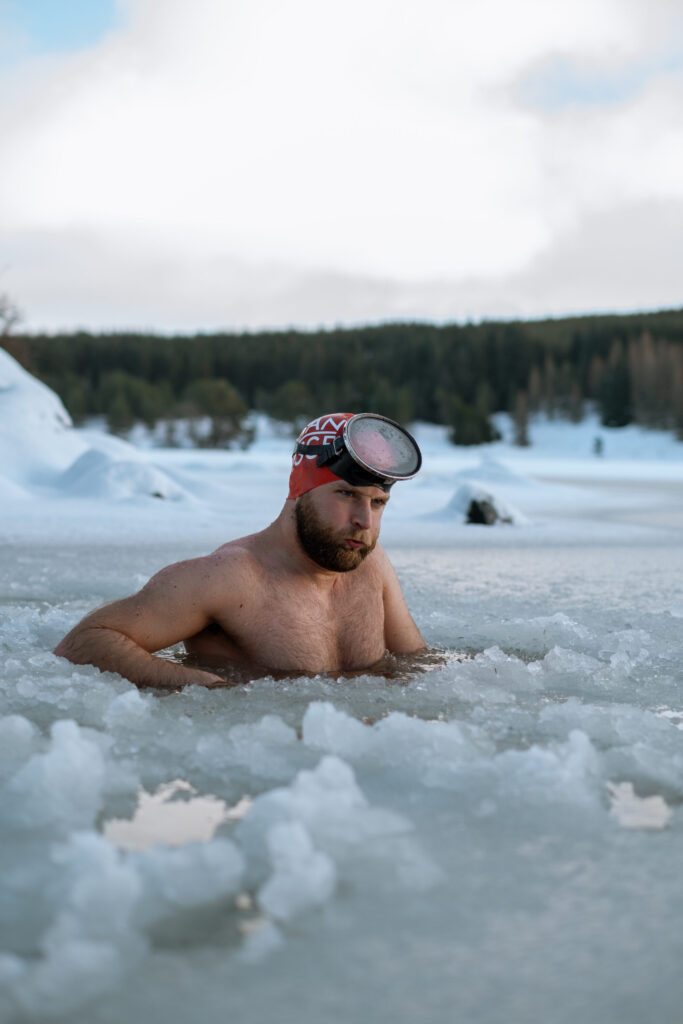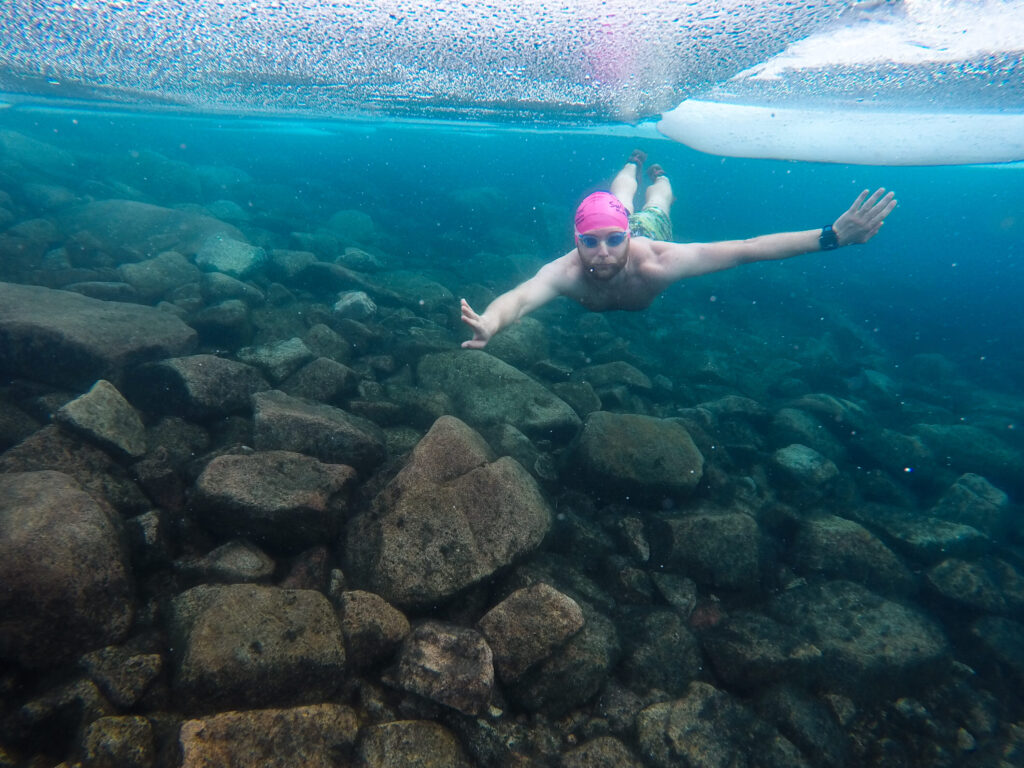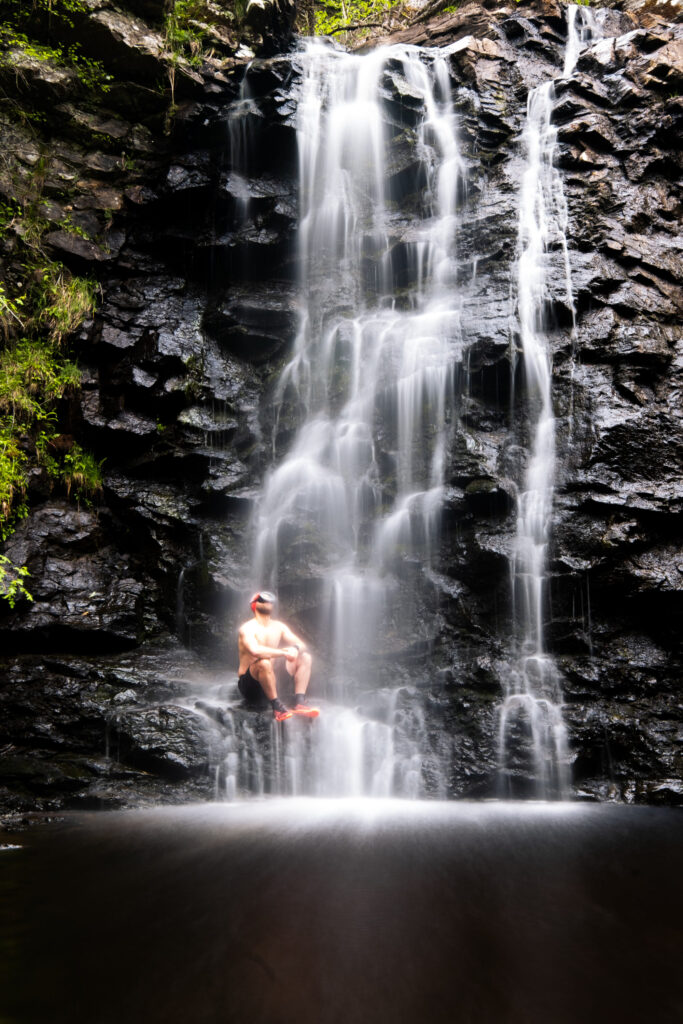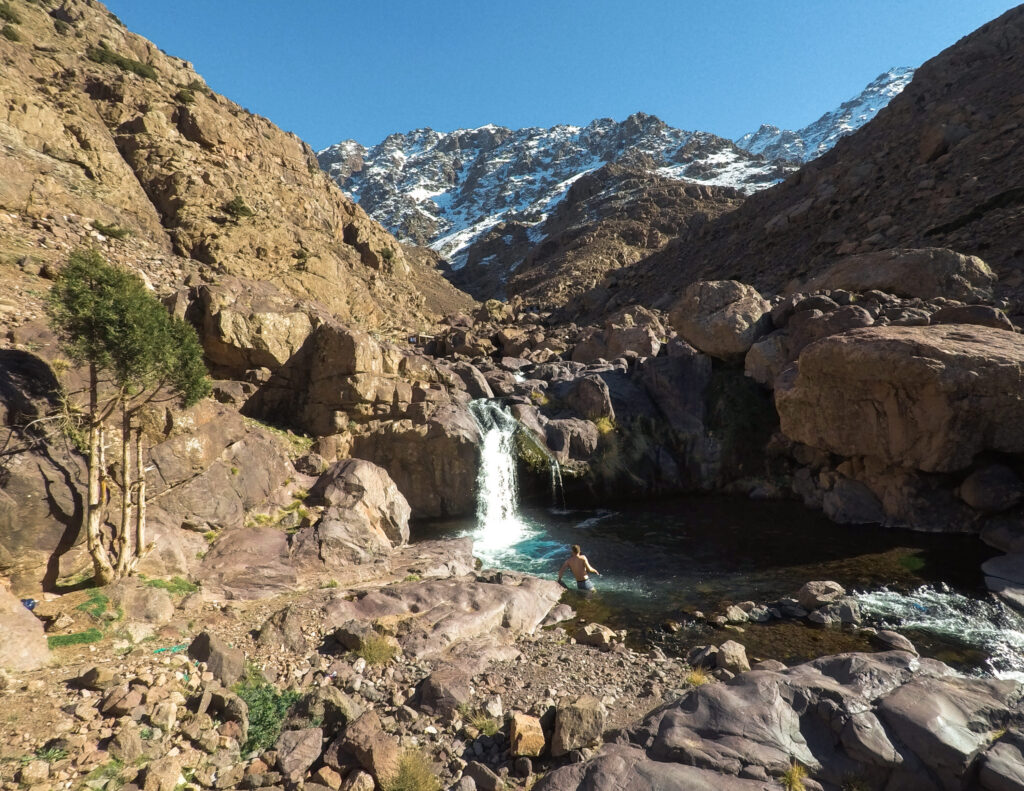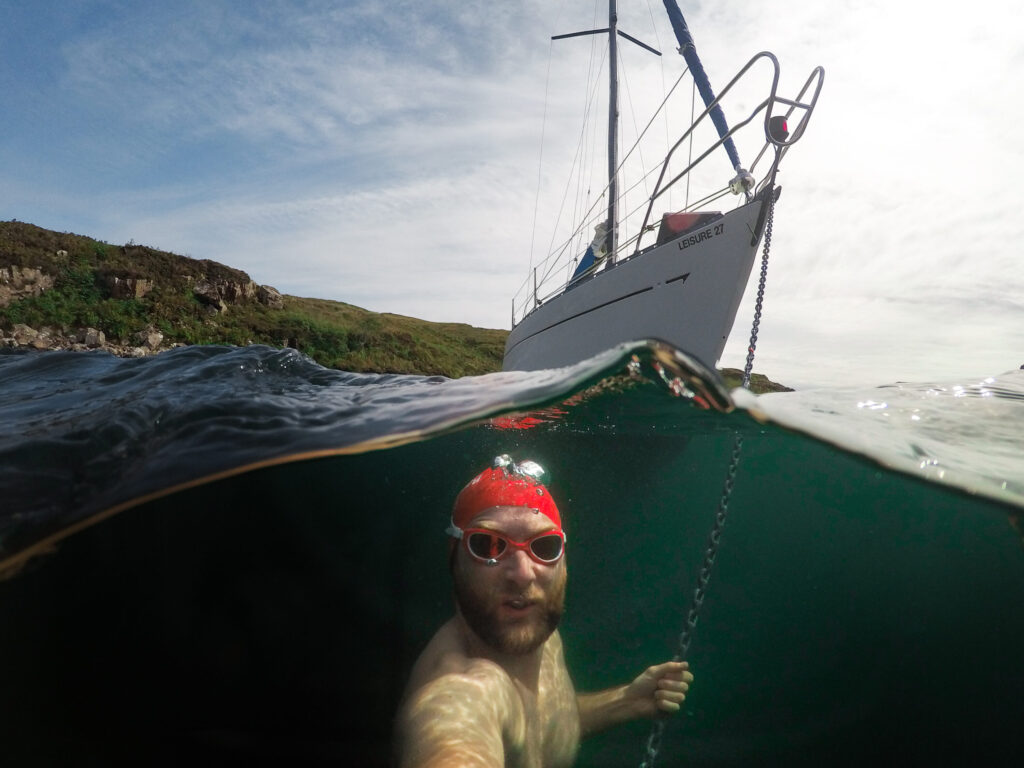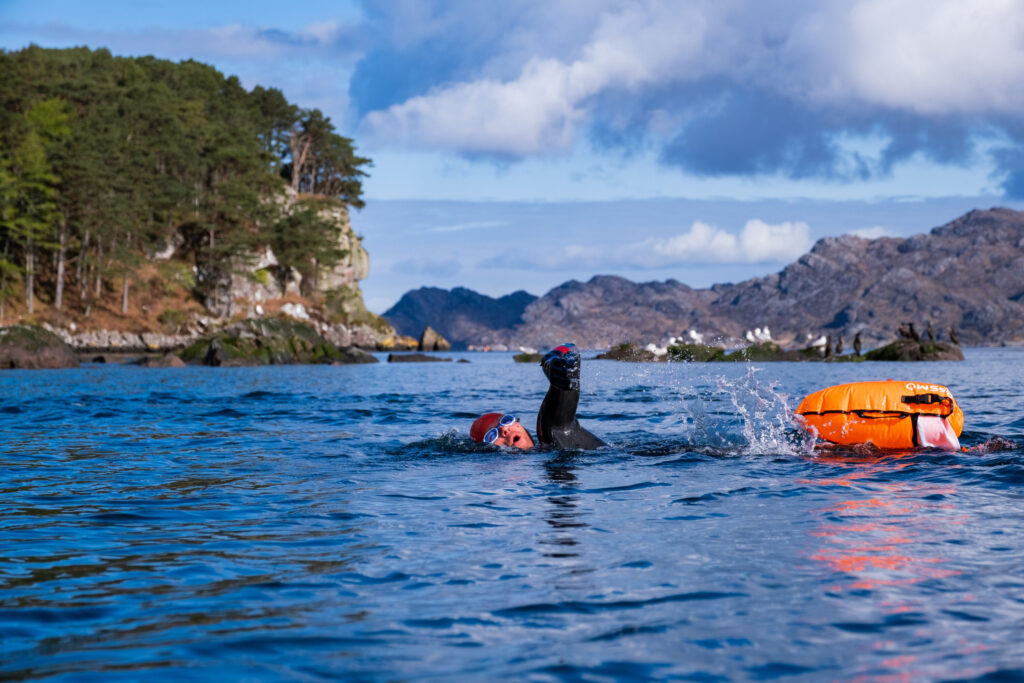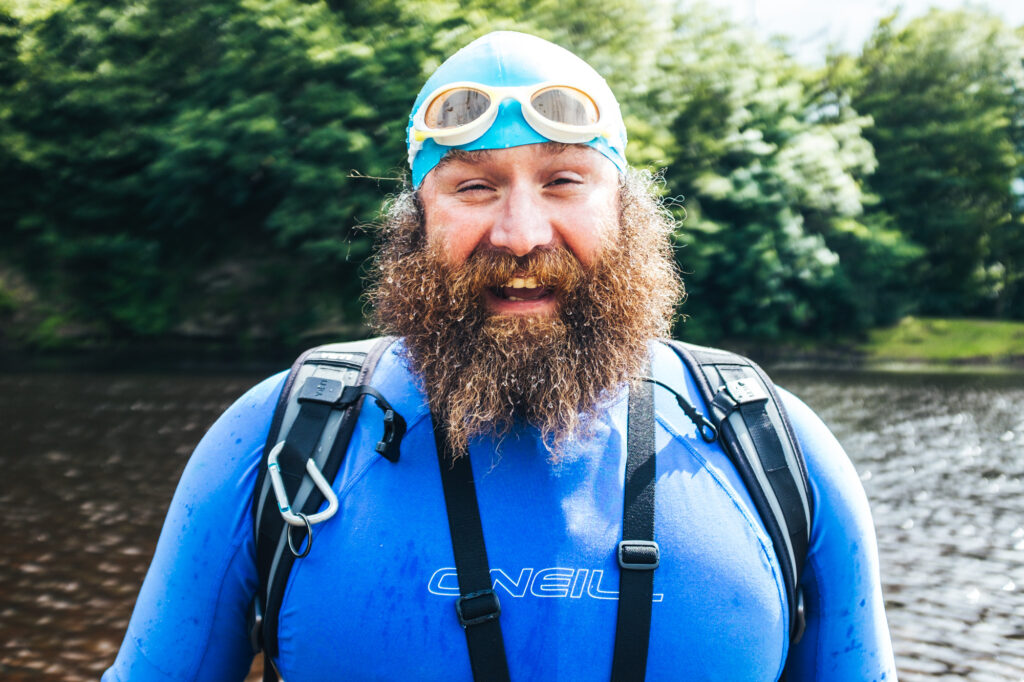Home Story Immersion therapy: a swimmer’s guide to different bodies of water
Immersion therapy: a swimmer’s guide to different bodies of water
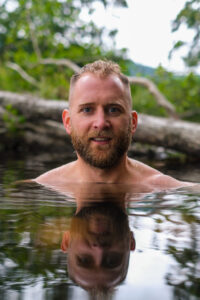
‘You never feel more alive.’ It’s a sentiment that underpins why so many of us love to swim outdoors. But the simple act of immersing yourself in a body of water isn’t always as straightforward as it may seem. Author of 1001 Outdoor Swimming Tips and passionate wild swimming campaigner Calum Maclean gives us some of his top tips for swimming in different types of water.
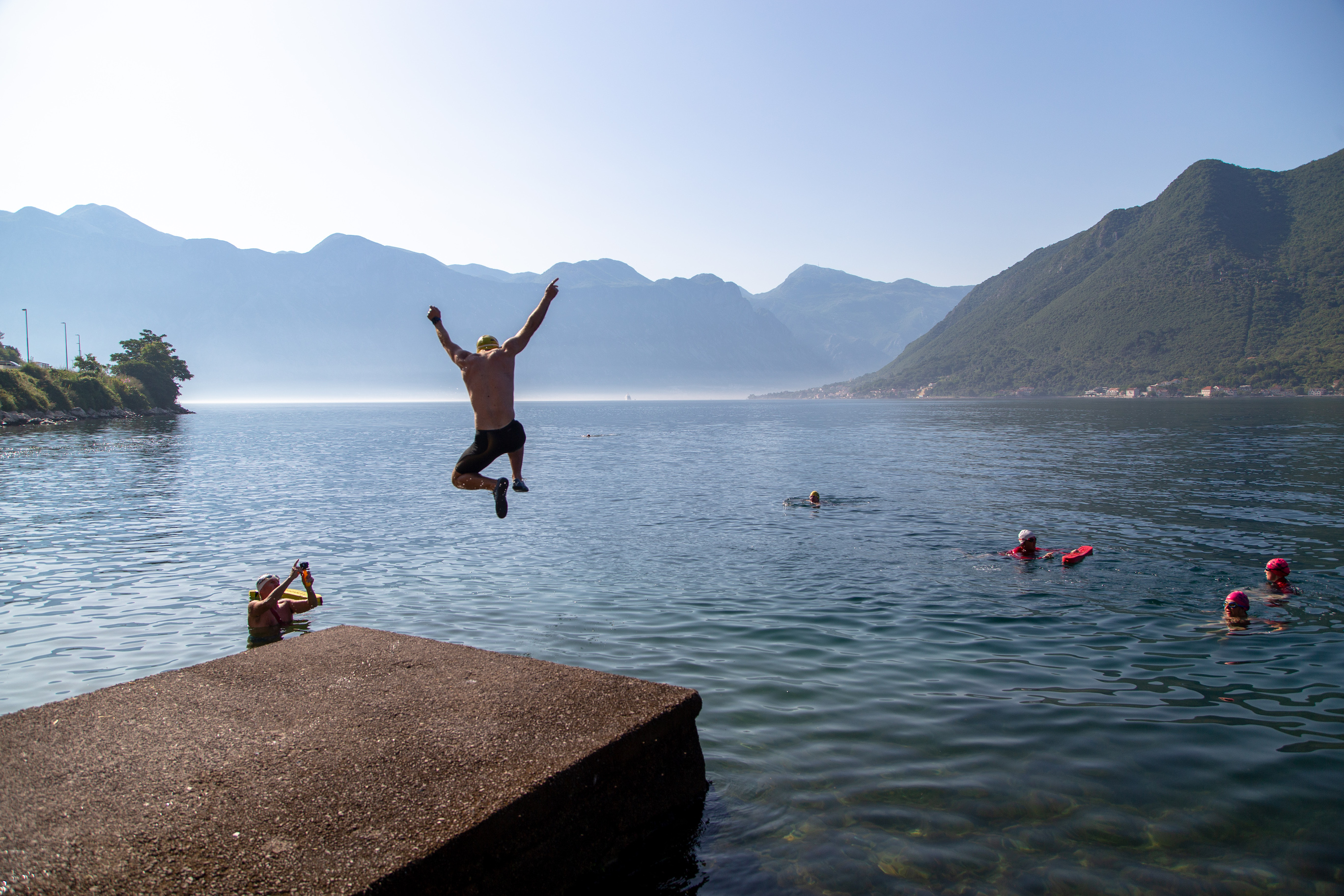
Leaping into the Bay of Kotor, in Montenegro
I love being in, on and around water, and it’s the process of putting myself into it, either for a dunk or a swim lasting hours, that brings me happiness. When I look at water, immediately the questions start to fire: Could this be swum? What kind of adventure could I have here? What’s below the surface? What’s around that headland? The more I swim, the more I want to explore. But turning up to a new body of water can be confusing.
Lakes
Swimmers are generally great at sharing advice and helping to keep others safe. Before you head somewhere new, seek out local swimmers and ask their advice. This can be through local swimming groups online, guidebooks or often just turning up at a carpark and looking out for the group with smiles on their faces donning the changing robes.
In summer, some lakes see blooms of blue-green algae which can be harmful, especially to dogs. Blooms can be quite localised within sections of lakes and should be quite obvious to the eye: like a bright pea soup or scummy covering on the surface.
Remember, if deep water is not something you enjoy, there is often no need to go right out into the depths of a lake. You can swim quite easily once you are around waist deep, and if you are swimming somewhere that other watercraft regularly use, then a tow-float can be very useful. This inflatable, brightly-colour bag makes you visible to others and also to anyone on shore. Some can be used to carry snacks as well on longer swims.
In Scotland – never call a loch a lake!
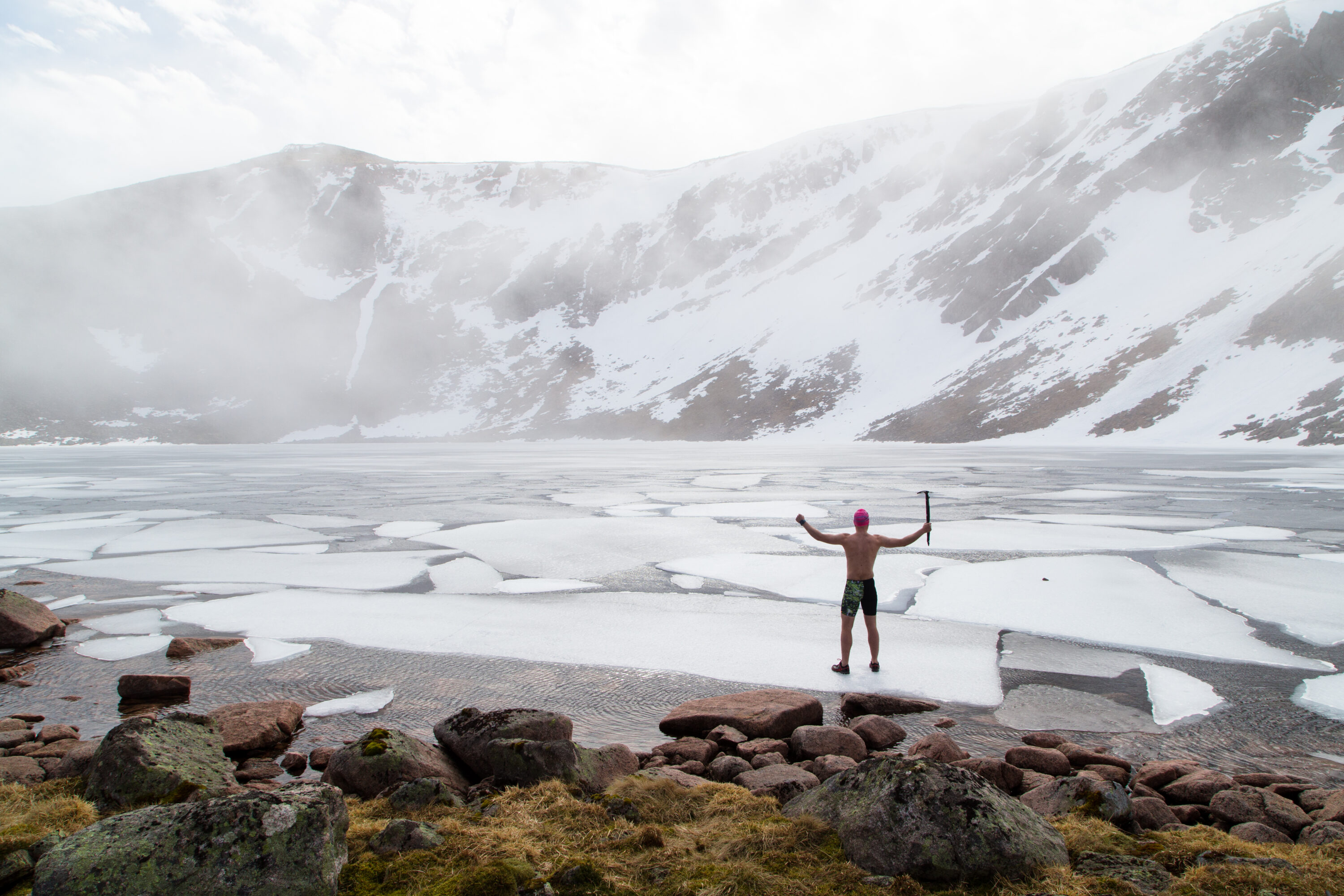
Above the icebergs this time at Loch Coire an Lochain
Rivers
Swimming in a river can be one of the best ways to make a swim into a journey. Choose a route that takes in something of interest, like a wild section that drifts away from houses and people, a journey between bridges, or even a swim that finishes at a pub or cafe. If you are towing a bag or float, be careful to ensure your leash doesn’t get caught or tangled on branches or bushes.
Before entering the water, decide where you will be getting out – it might be impossible to get back to your entry point once in the water. A good way to recce a potential route can be to walk alongside the river beforehand but that’s not always practical. I’ve often paddled a section of river with a canoe or paddleboard, using the time to consider if it could be swum. This is also a good way to spot hazards such as weirs and make a note of them for any swim.
In Scotland – never call a loch a lake!
When you reach more shallow sections of river, there are a few potential options on how to tackle them if normal swimming is no longer an option. If the flow keeps you moving, then swimming defensively is a good idea. Lie on your back with feet in front of you and arms out to the sides, sculling. This lets you look downstream and identify any hazards and if you do come across anything – it’s your feet and backside that usually meet them first. But be aware: the more you lift your head, the more your bum drops and might bounce you off rocks! Sometimes you might have to walk, but keep your body low in case you fall.
A slightly more reckless and fun option (only to be used in places that you know well) is to Superman! Basically take on Superman’s flying pose: arms stretched overhead, making your body into one long line, with a deep breath to keep you as buoyant as possible and fly over short shallow sections.
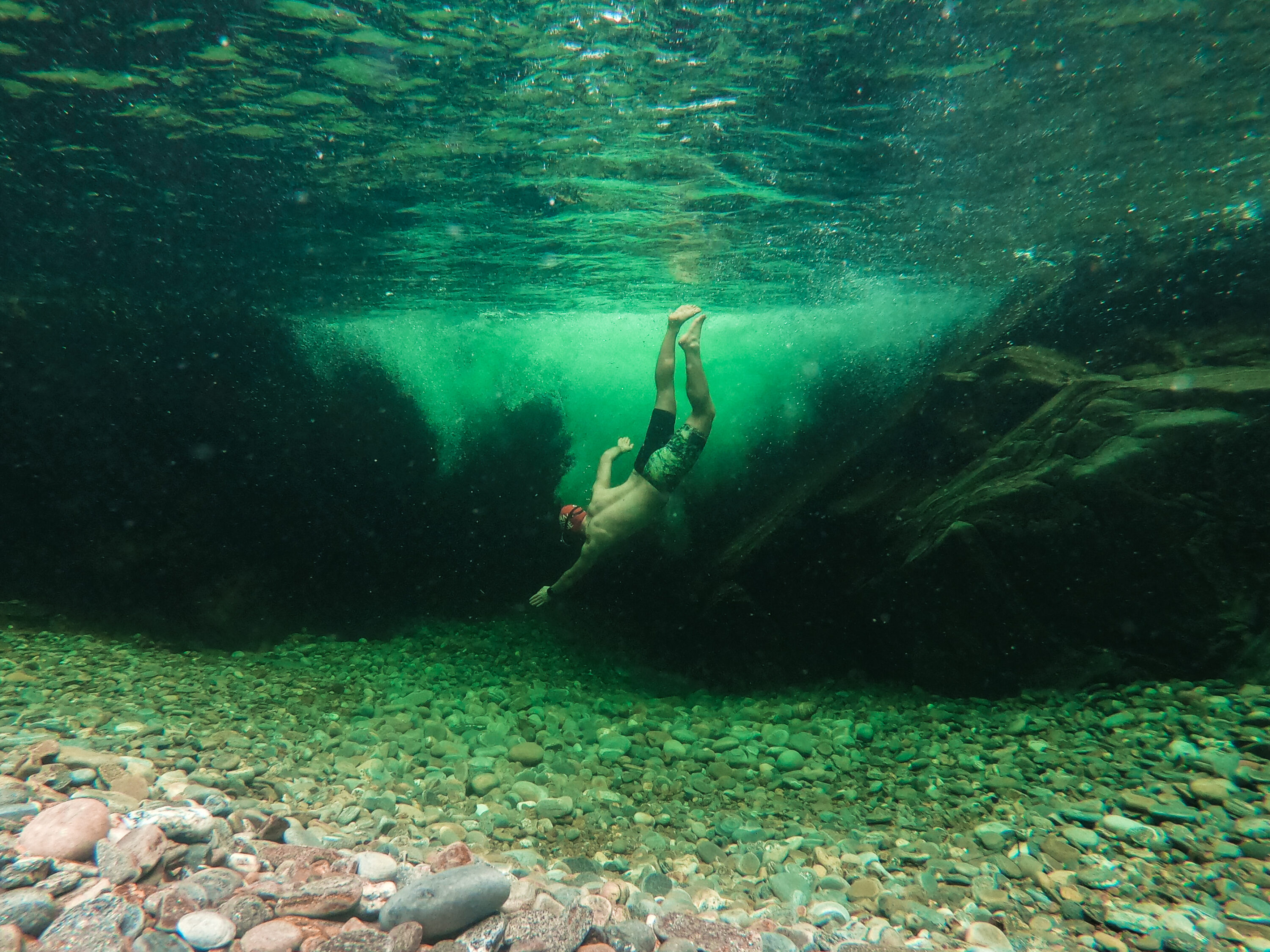
It’s amazing the clarity you can find in freshwater swimming holes.
The Sea
For me as a lover of water, one of the most beautiful sights is the curl of a wave as it spins away above you. Timing a dive below the surface correctly, you can be quite safe as it whips towards shore, creating a temporary piece of art in your very own wild viewing gallery.
Calm waters are generally where you will see more sea life, with them being clearer. Picking a swim that takes you by kelp beds or close to rocks can allow you to encounter fish, crabs, seaweed and more.
But don’t restrict yourself to only swimming in flat, calm, pristine water. I rarely feel more alive than after swimming in the sea when the water itself feels alive. This can be amongst surf, or when an onshore breeze sprays wave tops into your face, when getting into the water can feel like a bit of a challenge initially.
I rarely feel more alive than after swimming in the sea when the water itself feels alive
If you are swimming in waves, it is important to learn to spot what a rip looks like. Learn over time what you are capable of, and how different coastal locations change according to weather and tidal states. Take your time to build up to wilder seas, and always respect the water.
If you swim front crawl then try to learn to breathe bilaterally – breathing on both sides. This can be vital when you are faced with a rough sea, or even a glaring sun that stops you opening your eyes.
In 2019, Calum was part of a stiff-necked team to map out and follow the UK’s longest straight line not to cross any roads. 71.5 kilometres of munro, riverbed, bog and heather. You can check out the full story and video from that expedition here.
Don’t miss a single adventure
Sign up to our free newsletter and get a weekly BASE hit to your inbox
You might also like
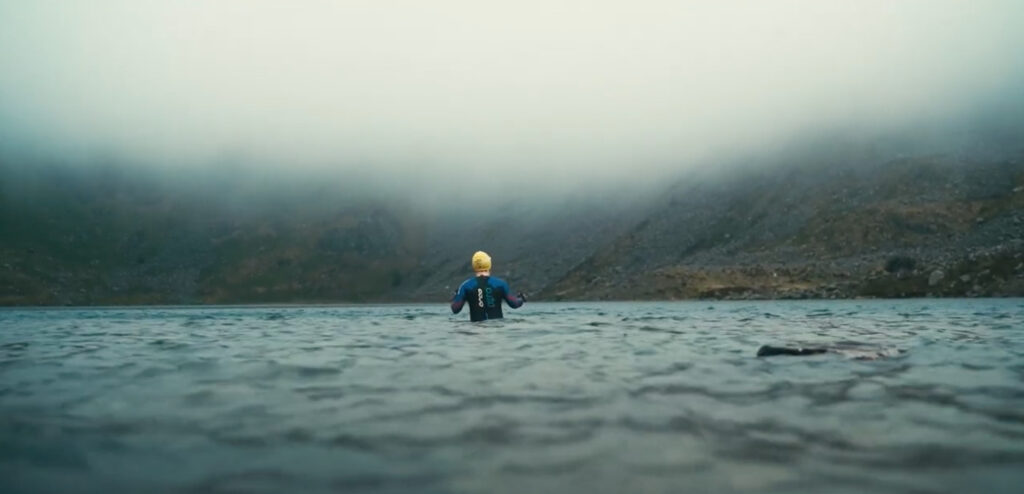
Video • BASE editorial team • Sep 30, 2022
Wild swimming for mental wellbeing
New short film Liminal explores the positive effects of wild swimming on one woman's mental health
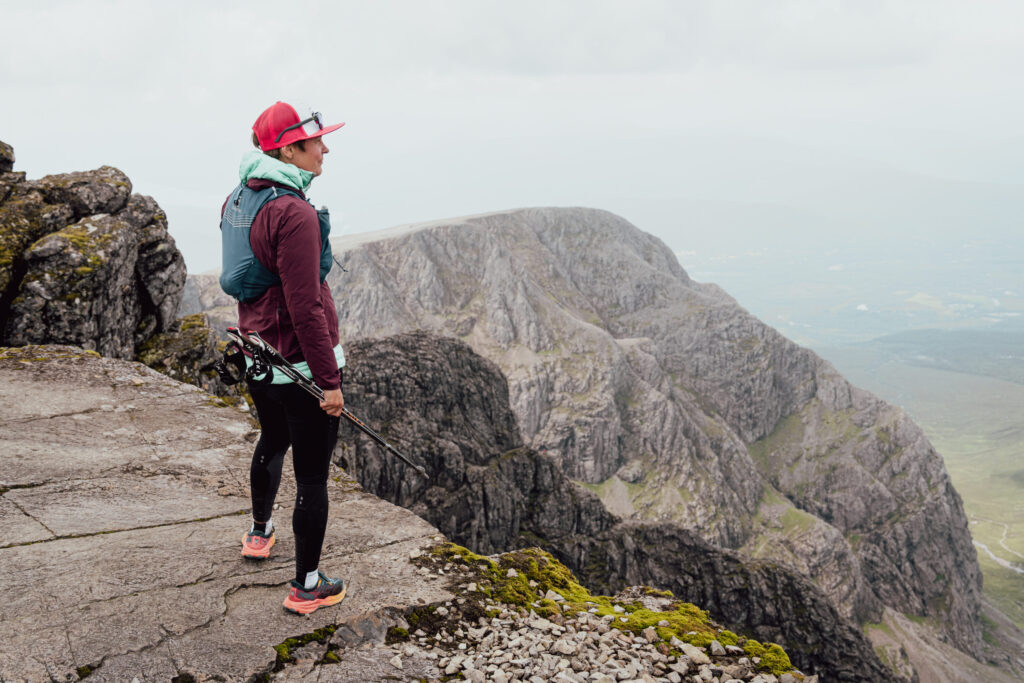
Interview • Chris Hunt • Aug 19, 2022
The Ultimate Three Peaks Three Lakes Challenge
Andrea Mason just swam Britain's three longest lakes and climbed its three highest peaks cycling between them all in 4 days
